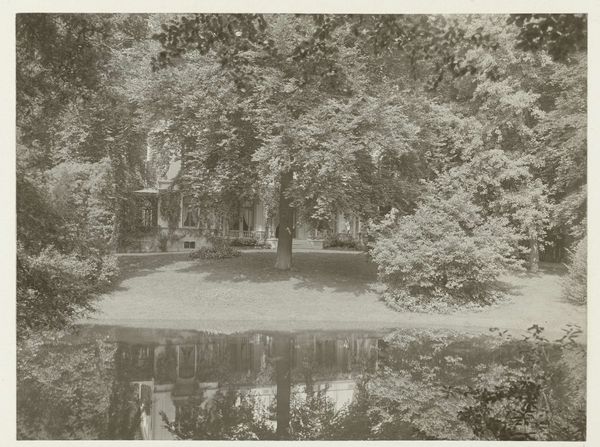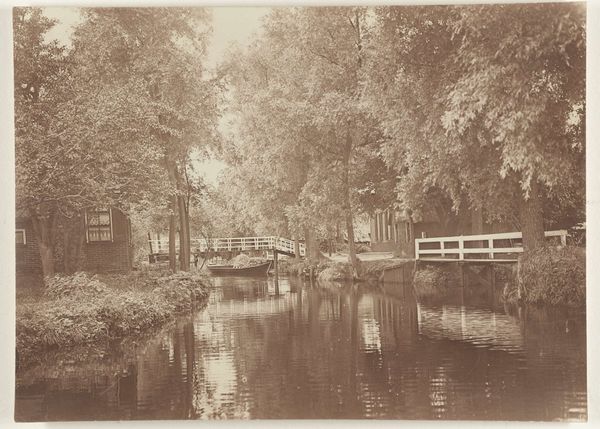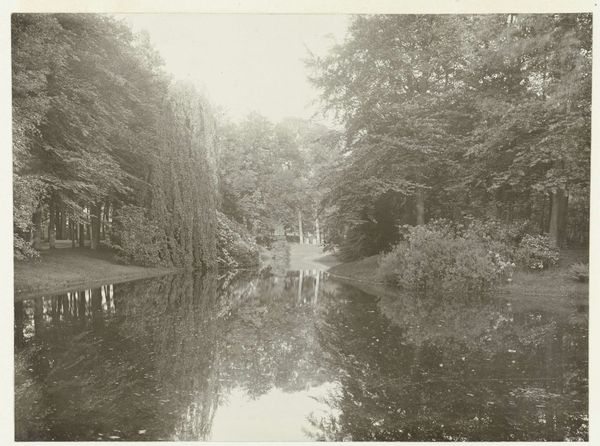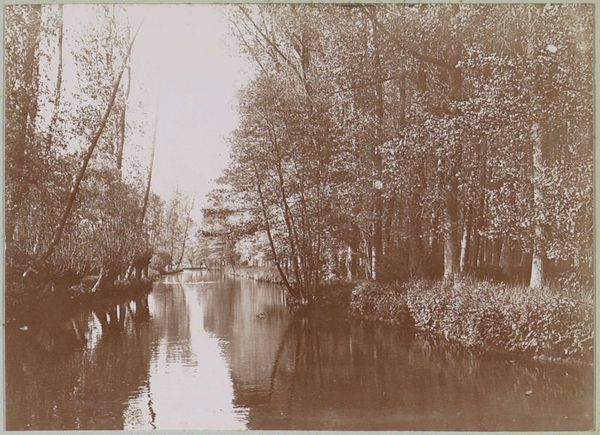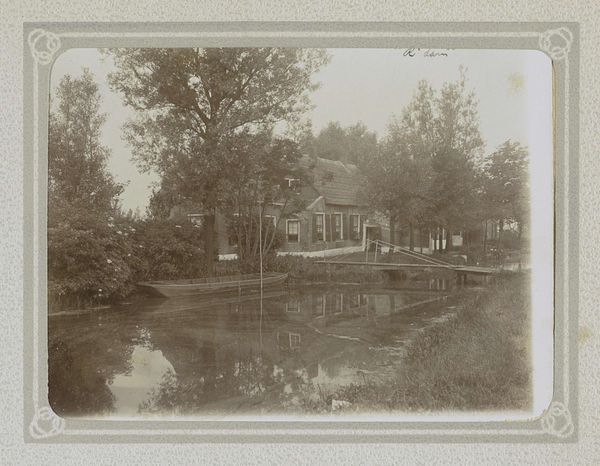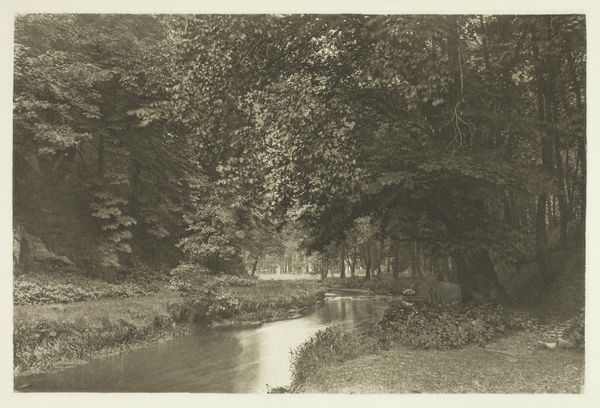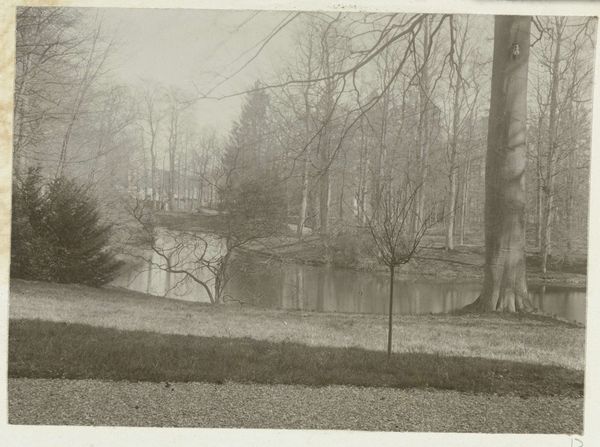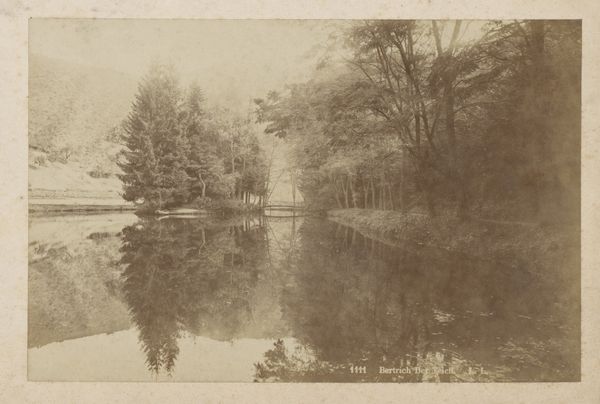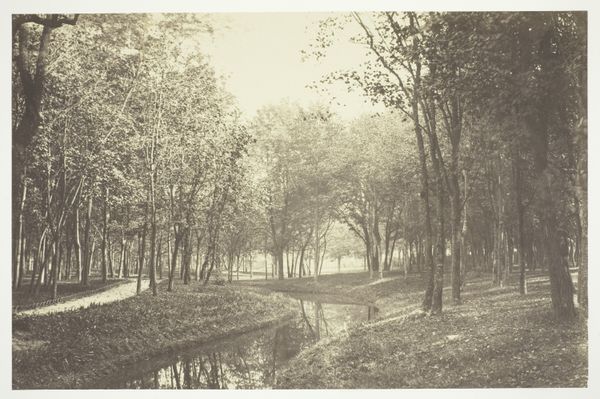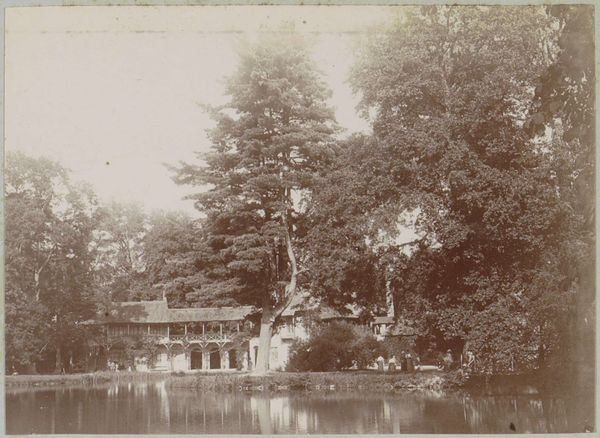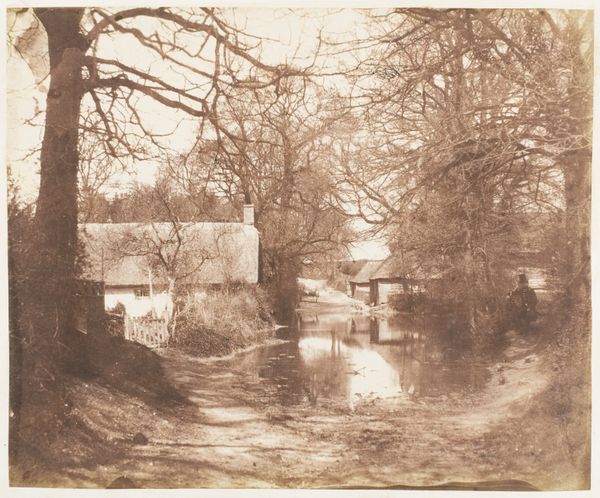
Dimensions: height 335 mm, width 520 mm, height 167 mm, width 223 mm
Copyright: Rijks Museum: Open Domain
Editor: We’re looking at "Gezicht op landhuis De Wildbaan, Driebergen," a gelatin silver print made sometime between 1903 and 1907 by Henry Pauw van Wieldrecht. It’s a beautiful, peaceful scene with a stately home in the distance, reflected in the water. What stands out to you most when you view it? Curator: What I notice first is the deliberate framing. The way the landscape almost obscures the main house; this isn’t just about documenting a stately home. This piece subtly questions the role of property and ownership in the early 20th century. Van Wieldrecht positions the home as part of the overall landscape, yes, but I'm prompted to ask: who had access to these spaces? And what were the implications for those who did not? Editor: That’s a really interesting point, the social context! I was mainly thinking about the composition and light. Does the Impressionist influence suggest anything about the meaning too? Curator: Absolutely. Impressionism wasn't just about aesthetics. Consider its emergence as a reaction against academic art that often served to legitimize existing power structures. Here, Van Wieldrecht uses an Impressionistic, plein-air style, but filters it through the new technology of photography. How can we reconcile this "art for art's sake" sensibility with the very real social divides of the era, when access to nature and leisure was drastically unequal? How does the technology factor in? Editor: I see what you mean. So, it's not enough to simply admire its beauty; we have to consider the social implications inherent in portraying such a scene, who the scene serves. Curator: Precisely! It compels us to unpack the visual language being employed to construct and reinforce narratives of class and privilege. These serene landscapes often mask histories of labor, exclusion, and environmental exploitation. How can our understanding of this impact our reaction to photography today? Editor: Thinking about it that way really changes my perspective. I appreciate you making me look at it beyond just the visual. Curator: And I, you for bringing new attention to this stunning artwork and continuing this dialogue with me.
Comments
No comments
Be the first to comment and join the conversation on the ultimate creative platform.
